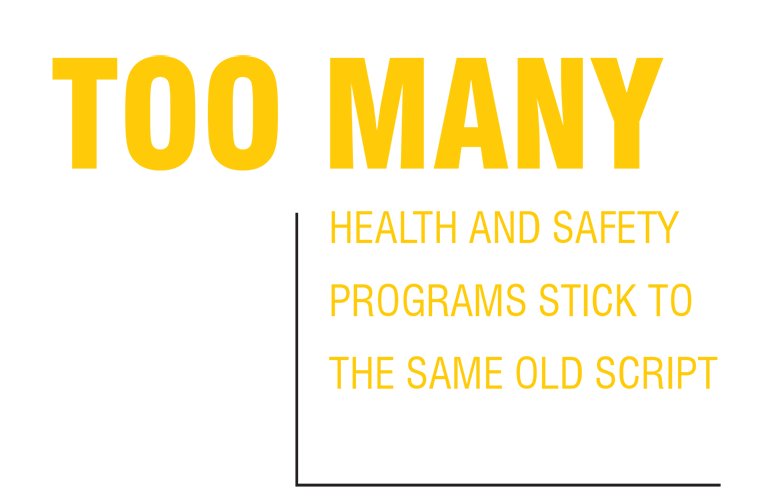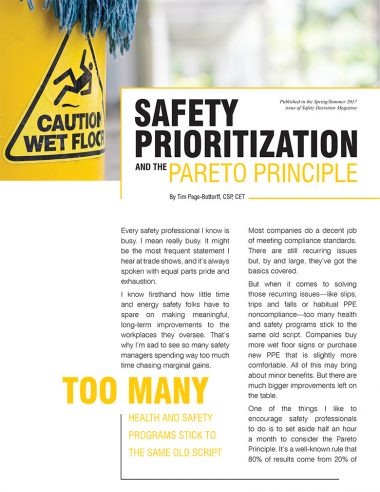This article by Tim Page-Bottorff, CSP, CIT was published in the
Spring/Summer 2017 issue of Safety Decisions Magazine
Every safety professional I know is busy. I mean really busy. It might be the most frequent statement I hear at trade shows, and it’s always spoken with equal parts pride and exhaustion.
I know firsthand how little time and energy safety folks have to spare on making meaningful, long-term improvements to the workplaces they oversee. That’s why I’m sad to see so many safety managers spending way too much time chasing marginal gains.
Most companies do a decent job of meeting compliance standards. There are still recurring issues but, by and large, they’ve got the basics covered.

But when it comes to solving those recurring issues—like slips, trips and falls or habitual PPE noncompliance—too many health and safety programs stick to the same old script. Companies buy more wet floor signs or purchase new PPE that is slightly more comfortable. All of this may bring about minor benefits. But there are much bigger improvements left on the table.
One of the things I like to encourage safety professionals to do is to set aside half an hour a month to consider the Pareto Principle. It’s a well-known rule that 80% of results come from 20% of the effort. When most people take some time to consider it, they quickly realize that the time they spend trying to enforce better compliance with regulations isn’t going to lead to dramatic improvements in results.
In fact, what’s currently happening with most safety pros is the flip side of the Pareto Principle: they’re getting the last 20% of gains and it’s taking 80% of their effort—or at least it feels like it.
A recent survey conducted by BLR showed that the three biggest challenges facing safety folks today are employee engagement, getting supervisor participation in safety programs, and employees taking shortcuts or ignoring rules.
Will what you’re doing now effectively deal with 80% of the problems related to these issues? If not, then it’s time to consider what will. Personally, I’ve seen a positive, awareness-based focus on human error reduction have a tremendous impact. It addresses all three of these issues (not to mention a host of other problems) on a number of levels—in short, it gets the most for relatively little effort.
But regardless of what specific solution you have in mind, a new approach will almost definitely be required. Because doing what you’ve already done can’t take you much further than where you’re at now.
I truly believe safety folks are superheroes, but they still only have 24 hours in a day—and most of that is already spent on the day-to-day work of keeping people safe.
Tim Page-Bottorff, CSP, CET is a senior SafeStart consultant, past president of the ASSP Arizona Chapter and a former United States Marine. As an OSHA trainer he is well-versed in how to facilitate effective training sessions and he frequently speaks about training and other safety topics at national safety conferences.

Get the PDF version
You can download a printable PDF of the article using the button below.

